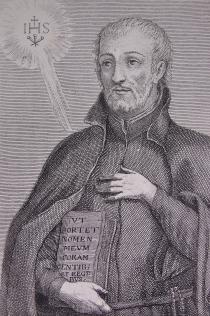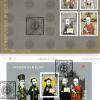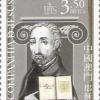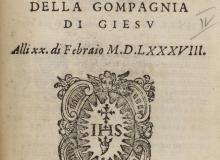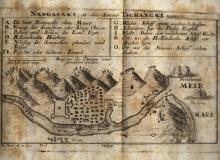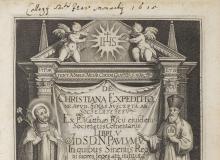Alessandro Valignano
Since the time of Francis Xavier (1506-1552), one of the earliest companions of Ignatius Loyola and the great missionary to Asia, Jesuits wished to follow in his footsteps to the east. In 1574 the fourth General of the Society of Jesus, Everard Mercurian (1514-1580), appointed Alessandro Valignano as his Visitor to the East. This meant that he was responsible for the work of all the Jesuits from India through to Japan (excluding those in the Philippines). Needless to say, this was a strategically important appointment that allowed Valignano to leave his stamp on the Jesuits’ manner of proceeding in Asia.
A lawyer before he joined the Jesuits, Valignano possessed a fine organizational mind and he was prepared to take his time analyzing the best means of participating in cross-cultural engagement and exchange. As a result, he came to the realization that in order for the Jesuits to be successful in their attempts to interact across cultures – and be the highly educated missionaries that they were, marked by their strong Christian humanism – then they needed to be the ones fitting into the local culture, and not the other way around.
That is, he knew that the church should not be exporting all things European to Asia, but needed to be “Indian in India, Japanese in Japan and Chinese in China”. To that end he gave very clear guidelines to the men under his charge. They were to learn the local languages, they were to treat new converts as equals and they were to seek to be as thoroughly localized as possible. He paid attention to what this meant in detailed ways: even directing the sort of houses to be built, the clothes to be worn and which men were best suited to serve in the different regions. It is for this reason he has become known as the architect of the missions.
Several of the legacies of his period of governance include the rapid growth of the Japanese Christian church during the latter decades of the sixteenth century, the promotion of the Tensho embassy of 1582 (which saw four young Japanese Christians visit Europe as official ambassadors) and the selection of Matteo Ricci as the Jesuit to attempt to enter China. He died in Macau in 1606.
Further Reading: Andrew C. Ross, A Vision Betrayed: The Jesuits in Japan and China, 1542-1742 (Edinburgh: Edinburgh University Press, 1994); J.F. Schütte, Valignano's Mission Principles for Japan (St Louis: Institute of Jesuit Sources, 1980).
